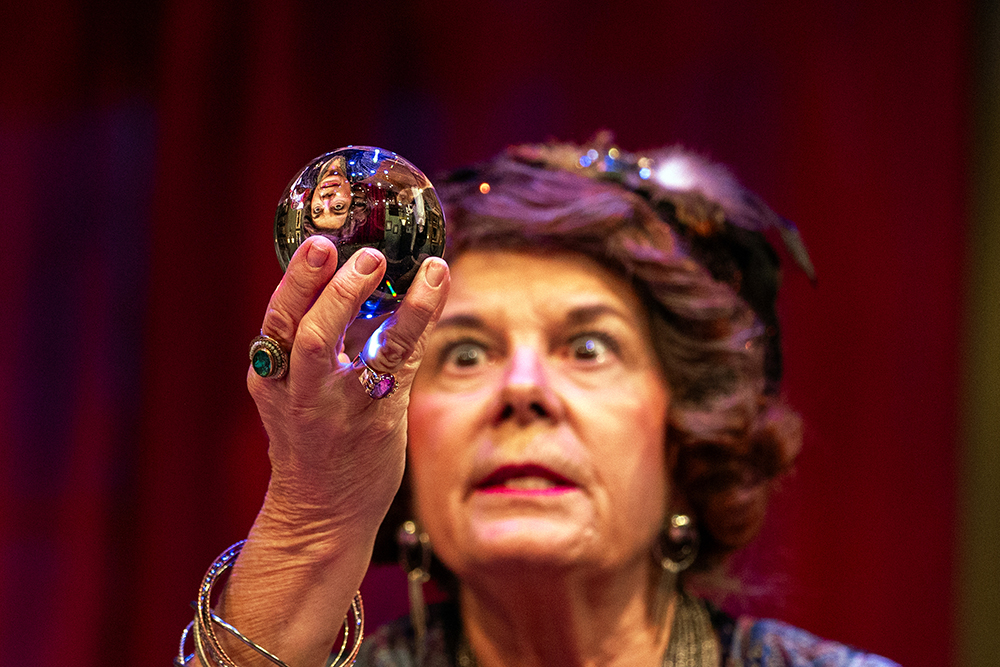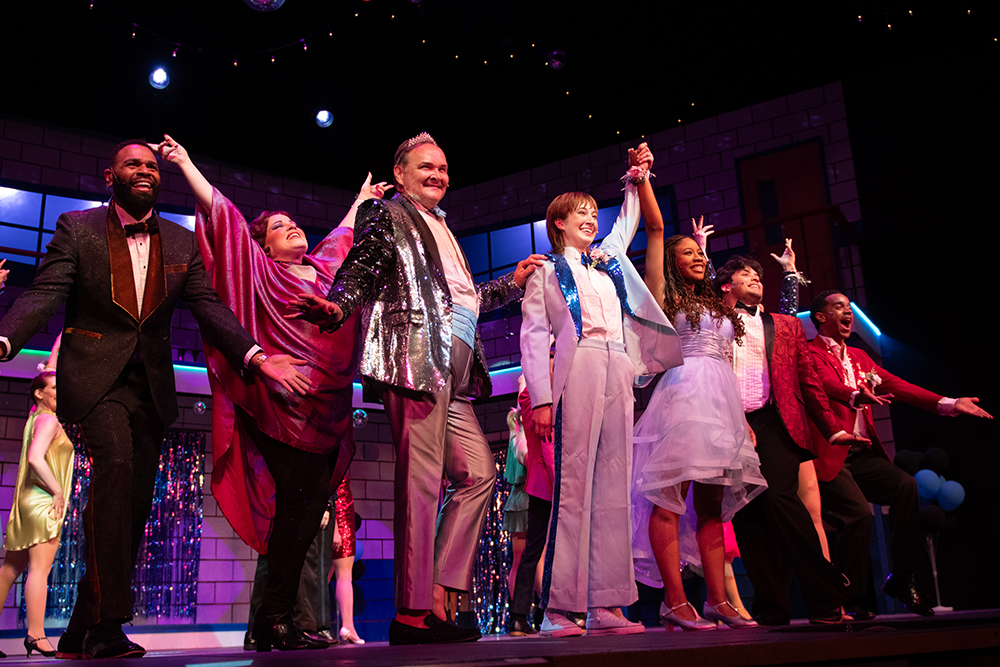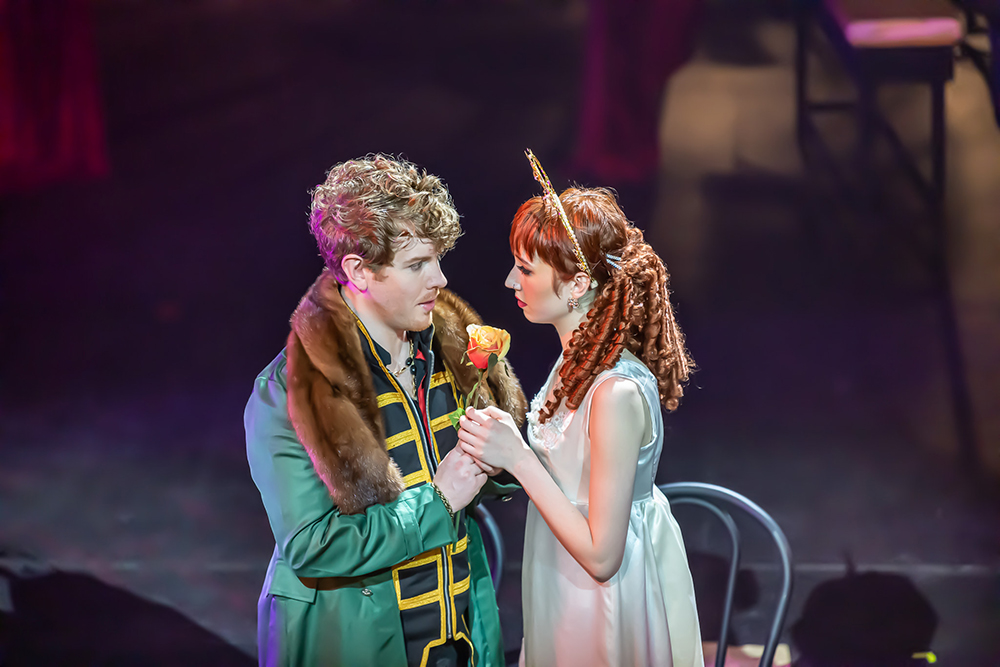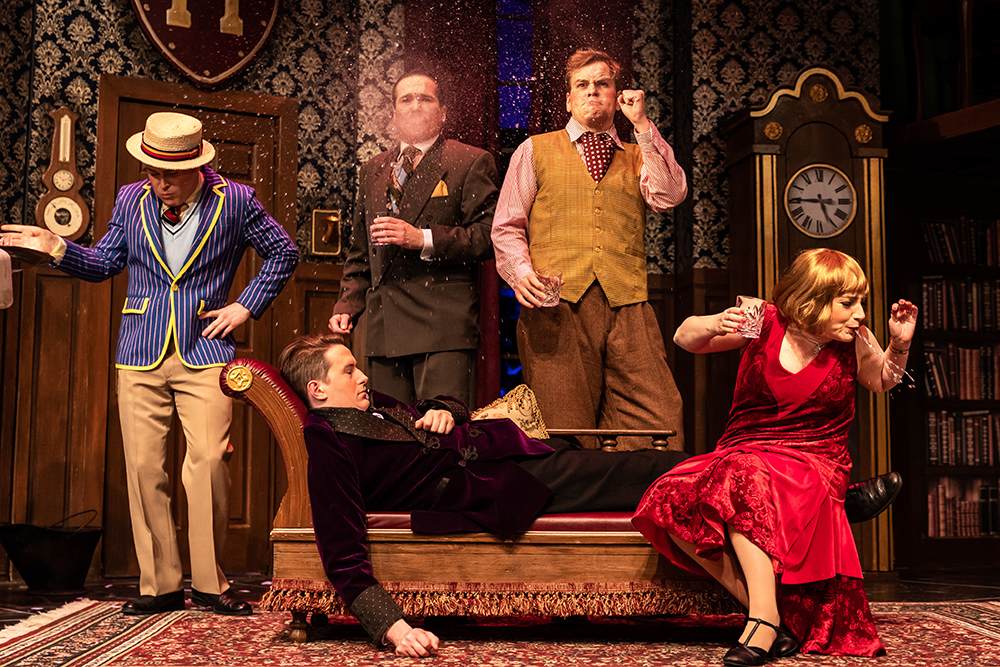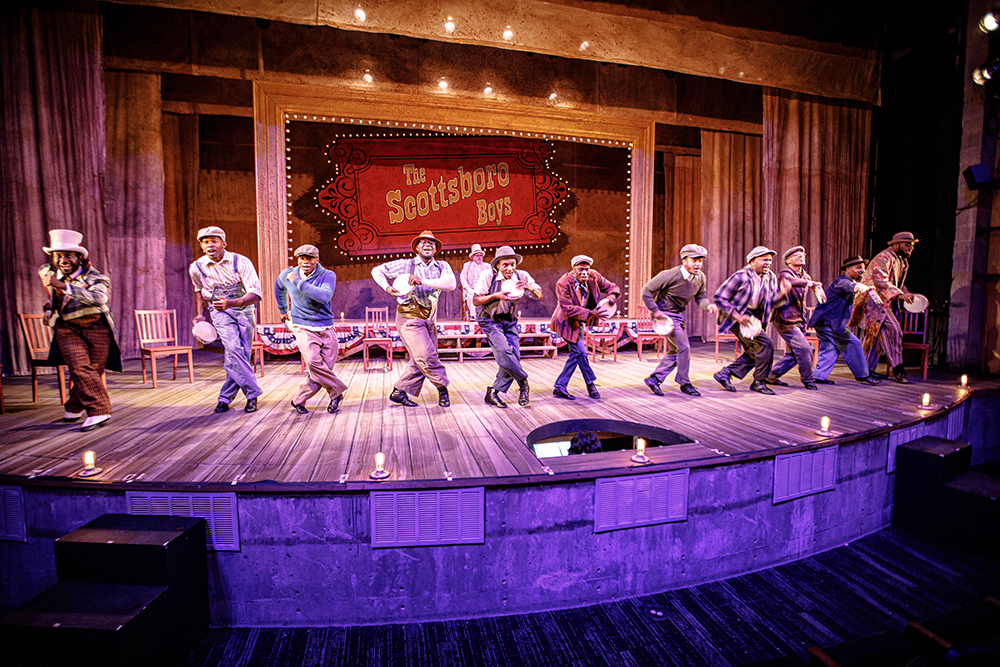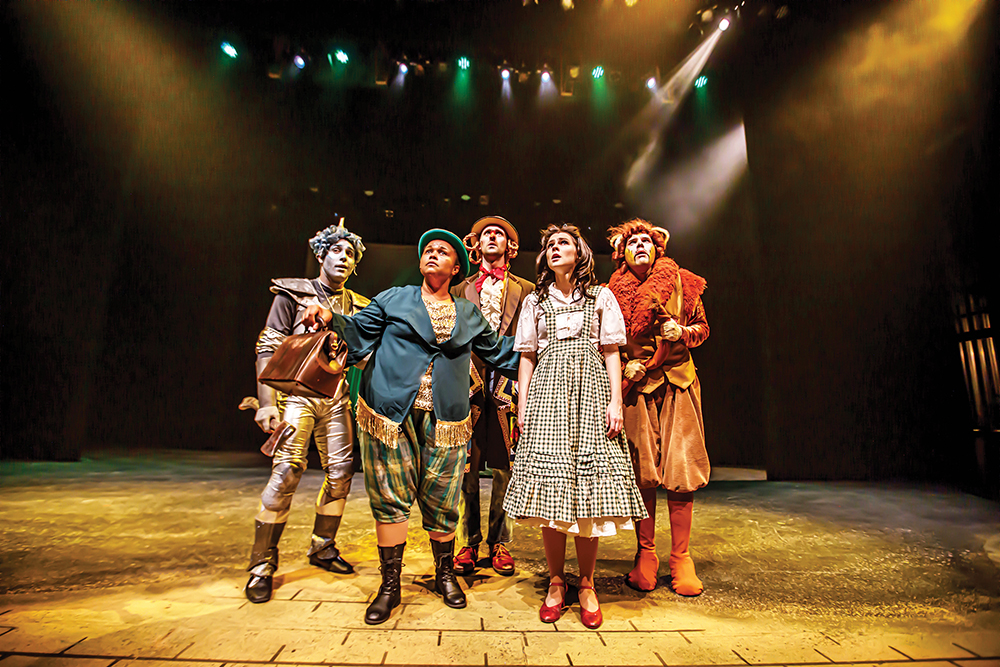During the opening scene of Theatre Memphis’ production of Blithe Spirit, I was worried. Noël Coward’s arguably most successful play starts out with a quiet moment between husband and wife, the exposition leisurely woven into the mundane, everyday sort of conversation that occurs between spouses. What made me anxious was the possibility that I would have to work to give my full concentration to this show — I’m currently going through the sort of personal crisis that makes distracting my mind difficult.
Fortunately, my worries proved fruitless. Once the action got going, I experienced one of the purest joys of entertainment: I forgot everything else. Blithe Spirit is funny in the way that I like best: There are plenty of big laughs, but much of the humor is hidden in the dialogue-heavy play; blink and you’ll miss it. Luckily, the cast makes you want to pay attention.
Blithe Spirit is a black comedy, one that is perfect for October as it is rife with both death and the arcane. Upper-crust author Charles Condomine and his second wife, Ruth, are planning a dinner party/seance in order to covertly observe their town’s local medium, Madame Arcati. Charles wants to see the “ticks of the trade” in action as research for his next literary project. Charles, Ruth, and their two friends are all decided skeptics, but it turns out that Madame Arcati is the real deal. During the seance she inadvertently summons the spirit of Charles’ first wife, Elvira, though Charles is the only person who can see or hear her. Crises ensue.
I always enjoy plays with unsympathetic protagonists. Characters who are inherently flawed are the most interesting and realistic, but in watching this play, I am fully on Ruth’s side, all imperfections notwithstanding. A woman making every effort to remain level-headed while attempting to rationally explain something to a (predictably obtuse) man is something I gleefully identify with, all the more so because of Lena Wallace Black’s energetic performance. I’ve observed Wallace Black in other productions, but seeing her embody Ruth Condomine I realized she possesses a rare gift, one that pertains to the physicality of acting. Simply put, her movements look natural, which may sound easy but is actually one of the most difficult things to achieve onstage.
Each member of this relatively small cast brings their own panache to the humor of the script, but one thing that stood out was the way Martha Jones approached the somewhat odd (if we’re being polite), downright weird (if we’re not) character of Madame Arcati. This is a role that could very easily fall into an archetype pitfall of being boring to watch, as audiences know what to expect from a batty fortune teller. Jones, however, brings a sincerity to the character that makes her antics that much more humorous; it’s obvious she’s having fun playing this character, which in turn makes it fun to witness.
There’s not really a weak link in this cast, as even the character I was least interested in — Charles Condomine — shifts at the last minute and becomes much more intriguing. The ending of this play is one that had me scratching my head, but not in a bad way. Adam Remsen plays Charles Condomine as a kind of weak-sauce, limp-fish-handshake man who is ruled not only by the women in his life but also by his own selfishness. In short, a pretty familiar male cliche. That is, until the final scene, when the hitherto boring Mr. Condomine becomes something else. Remsen does a delightful job in showing Condomine’s true colors, leaning into the snide, boorish cad that has been hiding under the surface all along.
What I’m curious about, in contemplating the close of this play, is this: Is Charles Condomine acting like such a selfish prick in order to drive away the spirits of his wives (yep, by this time they’re both dead) for their sakes, or is he truly just another asshole finding his stride? The latter seems far more likely, but it is an added layer of entertainment to wonder.
Blithe Spirit runs through October 29th at Theatre Memphis.
